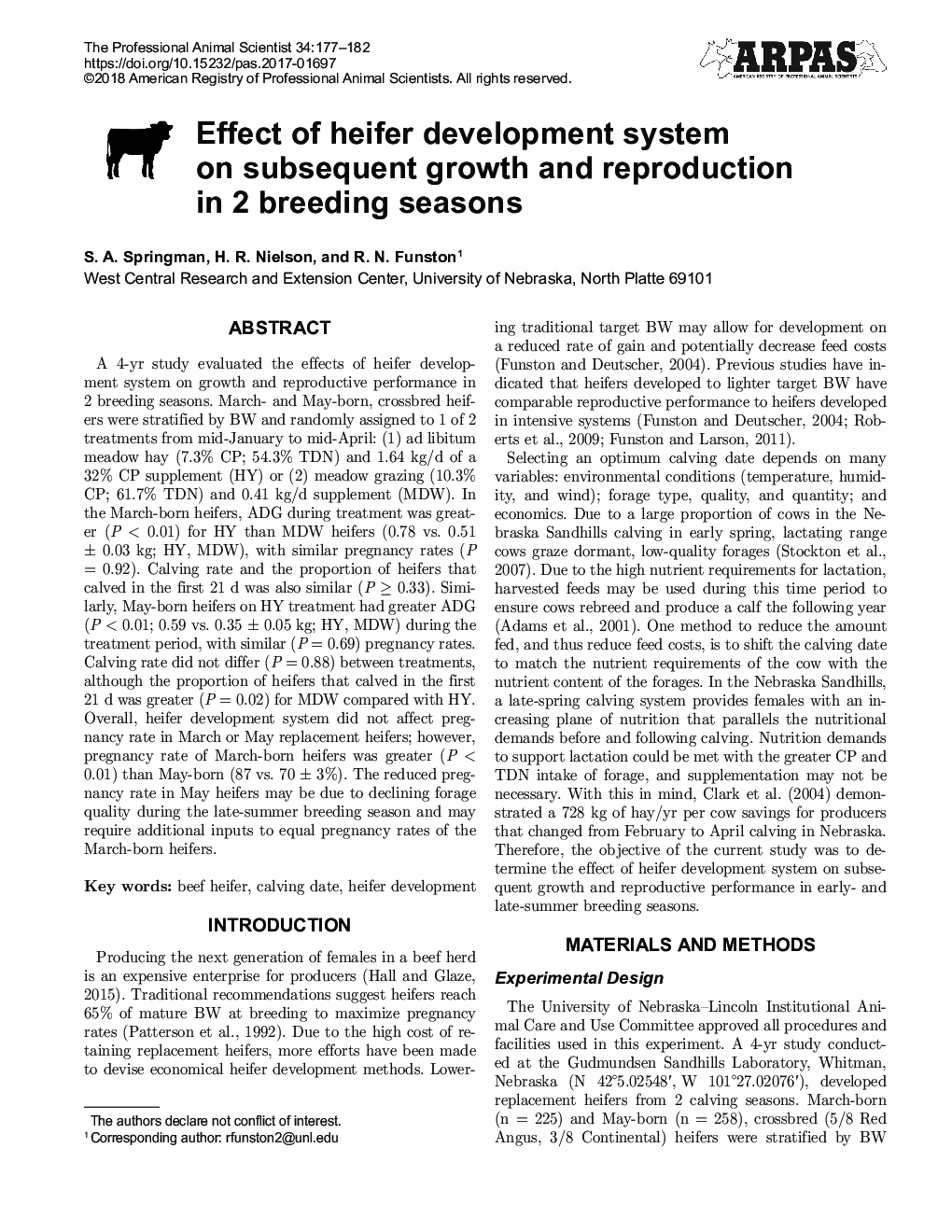| Article ID | Journal | Published Year | Pages | File Type |
|---|---|---|---|---|
| 8503683 | The Professional Animal Scientist | 2018 | 6 Pages |
Abstract
A 4-yr study evaluated the effects of heifer development system on growth and reproductive performance in 2 breeding seasons. March- and May-born, crossbred heifers were stratified by BW and randomly assigned to 1 of 2 treatments from mid-January to mid-April: (1) ad libitum meadow hay (7.3% CP; 54.3% TDN) and 1.64 kg/d of a 32% CP supplement (HY) or (2) meadow grazing (10.3% CP; 61.7% TDN) and 0.41 kg/d supplement (MDW). In the March-born heifers, ADG during treatment was greater (P < 0.01) for HY than MDW heifers (0.78 vs. 0.51 ± 0.03 kg; HY, MDW), with similar pregnancy rates (P = 0.92). Calving rate and the proportion of heifers that calved in the first 21 d was also similar (P ⥠0.33). Similarly, May-born heifers on HY treatment had greater ADG (P < 0.01; 0.59 vs. 0.35 ± 0.05 kg; HY, MDW) during the treatment period, with similar (P = 0.69) pregnancy rates. Calving rate did not differ (P = 0.88) between treatments, although the proportion of heifers that calved in the first 21 d was greater (P = 0.02) for MDW compared with HY. Overall, heifer development system did not affect pregnancy rate in March or May replacement heifers; however, pregnancy rate of March-born heifers was greater (P < 0.01) than May-born (87 vs. 70 ± 3%). The reduced pregnancy rate in May heifers may be due to declining forage quality during the late-summer breeding season and may require additional inputs to equal pregnancy rates of the March-born heifers.
Related Topics
Life Sciences
Agricultural and Biological Sciences
Animal Science and Zoology
Authors
S.A. Springman, H.R. Nielson, R.N. Funston,
